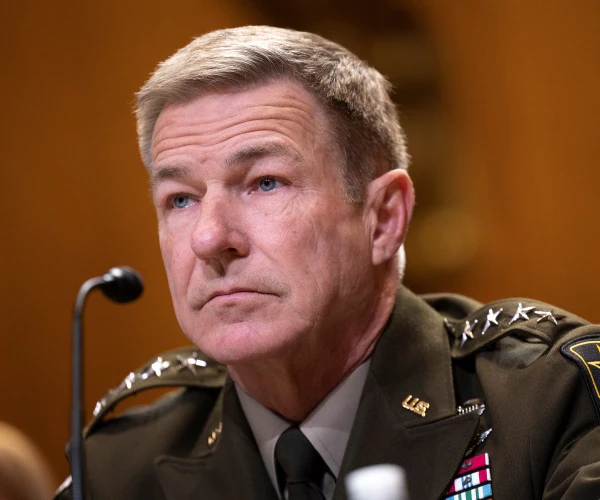
“Maj. Gen. Michael McCurry, the commanding general of the U.S Army Aviation Center of Excellence that advises the Army on aviation policy, told Newsmax that unmanned drone platforms will be increasingly paired up with AH-64 Apache attack helicopters and other units. It first tested pairing a drone with the Apache in 2020, and McCurry said it is viewed as the future for the Army.
Drones first made headlines after 9/11, when Predator drones manufactured by General Atomics started taking out terrorist targets in Afghanistan, Iraq, and elsewhere. When many people think of armed drones, these are the types that come to mind.
But a diverse array of sizes and capabilities exist on the modern battlefield.
“I think we’re really seeing unmanned aircraft really come into their own in recent years,” C. Mark Brinkley, the senior director of marketing and strategic communications for General Atomics, told Newsmax. “The war in Ukraine shows that it’s not just desert warfare. Central Command kind of a tool, but actually it has applications in urban environments, in large-scale combat areas such as the Pacific Theater.
“The Army sees that as much as any other of the services … The Apaches of the future will be able to have kind of a manned/unmanned component, where the Apache pilots will be able to control their own drones or to coordinate with [drones] like the Gray Eagle to provide standoff and more safety for the pilots in those helicopters.”
Drones have already proven their battlefield worth in diverse locales, ranging from the rugged Middle East to Ukraine and Nagorno-Karabakh. They also serve an array of needs, from offense to surveillance to making cargo deliveries at forward operating bases in combat areas.
The Kaman Corporation’s KARGO drone, which was showcased at the AUSA convention, is a quadcopter that can carry up to 800 lbs. of cargo for almost 600 miles. This capability gives battlefield commanders the option to send logistical payloads into contested areas without putting humans at risk
“We see all of these UAV concepts coming together very close to or under the enemy threat umbrella, so it makes a lot of sense to us to design something … that you can afford to lose”
Comment: This is what I like to see, forward thinking and acquisition that raises the capability of the force and reduces the chance of the soldier losing a piece of his/her butt.
The KARGO drone is particularly intriguing. This is a long way from the time when people like me were trained to set up a landing strip on flashlight illumination in a meadow. Having a C-46 come at you in the dark with no lights on is a major trip. Why go to Disneyland? pl
Army Leaders: Drones, Autonomous Vehicles Changing Face of Warfare | Newsmax.com

This highlighted in bold part: “but actually it has applications in urban environments, in large-scale combat areas such as the Pacific Theater.” Is very interesting and nicely public.
The use of drones for artillery spotting, adjustment and target designation by GPS, laser or who knows what else is a huge advancement in indirect fire. This pairing of drones with Apaches reminds me of the use of OH-58s with AH-1 Cobras back in the 70s. For long range fires, like in the Pacific theater, drones will probably be doing some serious target designation for ballistic and cruise missiles. Part of a platoon’s crew served weapons will now be drones for both reconnaissance and attack.
IMHO every US Abrams, Bradley, Stryker, and Humvee in maneuver units should have an onboard complement of offensive UAVs plus an onboard defensive system against hostile UAVs. Ditto for USMC LAVs and AAVs. How many and of what type & model I have no clue. But there small such units should be set up immediately then tested and evaluated extensively at the Yuma Proving Ground and at 29 Palms.
There are many different types of drones. In the beginning we had those big, long range drones that were directly controlled from some HQ, thousands of miles away. They work, especially because they were the first but I do not see that as the future.
I’ve said this before and I say it again, the biggest opportunity is in small, autonomous drones that are basically smart hand grenades tossed by someone who can throw 10lb weight about 10 miles. All these cheap bumble bees have to do is to identify ‘people carrying guns’, or ‘truck’. A well placed 10-20lb exposive can do lots of damage.
I’m inrigued by this because we already have cameras and software that can do cost effective facial recognition. Wouldn’t identifying likely targets in a fixed area be easier? The first amy to master this will do very well for itself.